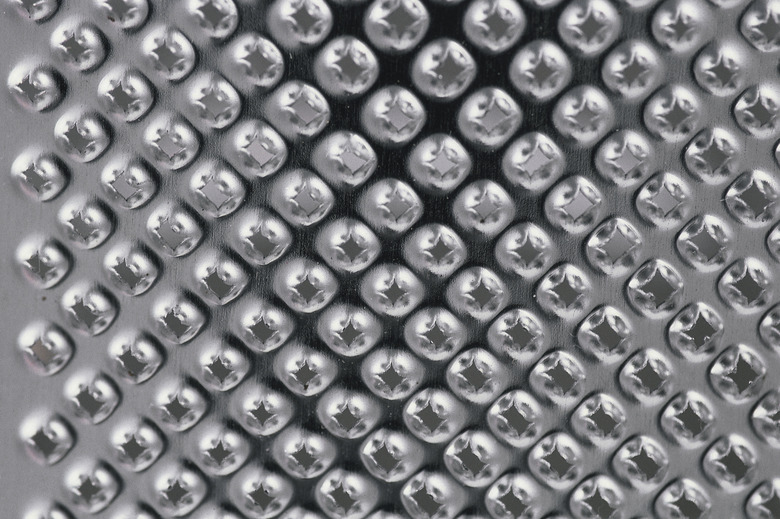What Chemical Formula Do You Get When Mixing Copper & Aluminum?
Copper and aluminum can be combined to form a copper-aluminum alloy. An alloy is a mixture, and therefore does not have a chemical formula. However, under very high temperature, copper and aluminum can form a solid solution. When this solution cools, the intermetallic compound CuAl2, or copper aluminide, can form as a precipitate.
Compounds and Alloys
Compounds and Alloys
A compound has a fixed ratio between its constituent elements. No matter how much of a compound you have, the ratio between the different atoms is the same. A mixture, on the other hand, can involve varying amounts of its constituent elements. A metal alloy is a mixture of two or more metals in any ratio. Therefore, an alloy does not have a chemical formula. Instead, alloys are described in terms of percentages. These percentages can change when more of one of the metals is added.
Solid Solution
Solid Solution
When copper and aluminum are heated to 550 degrees Celsius (1,022 degrees Fahrenheit), solid copper will dissolve in the aluminum, forming a solution. At this temperature, the copper-aluminum solution can contain up to 5.6 percent copper by weight. This solution is saturated; it can hold no more copper. As a saturated copper-aluminum solution cools, the solubility of copper decreases and the solution becomes supersaturated. When the copper eventually precipitates out of solution, it forms the intermetallic compound CuAl2.
Intermetallic Compounds
Intermetallic Compounds
The intermetallic compound CuAl2 forms slowly after the initial solution is created. Over time, copper atoms can move through the alloy due to diffusion. This movement leads to the formation of CuAl2 crystals. This compound always contains two aluminum atoms for every one copper atom; it is 49.5 percent aluminum by weight. Because of this fixed ratio, the compound has a definite chemical formula.
Precipitation Hardening
Precipitation Hardening
The particular orientation of the atoms in aluminum leads to slipping between planes of atoms. This translates to a reduced strength. When the CuAl2 crystals form, this slippage is lessened. This process is called precipitation hardening, and helps increase the strength of a copper-aluminum alloy. Manufacturers can regulate temperature over time to maximize this hardening.
Other Compounds of Copper and Aluminum
Other Compounds of Copper and Aluminum
CuAl2 is the dominant intermetallic compound of copper and aluminum. However, the two metals can also form the intermetallic compounds CuAl and Cu9Al4. These compounds can form over time after the initial formation of CuAl2. The formation of these other compounds depends on the temperature, time and site of copper precipitation.
References
- Purdue University: The Structure of Metals
- Purdue University: 2.1 An Analogy for Elements Versus Mixtures Versus Compounds
- Portland State University: Dominant Intermetallic Compounds for Common Bimetal Combinations
- Princeton University: Copper Aluminide, CuAl2
- Journal of Electronic Materials; Growth of Intermetallic Compounds in Thermosonic Copper Wire Bonding on Aluminum Metallization; Hui Xu, et al
- University of Illinois at Urbana-Champaign: Precipitation Hardening
Cite This Article
MLA
Murmson, Serm. "What Chemical Formula Do You Get When Mixing Copper & Aluminum?" sciencing.com, https://www.sciencing.com/chemical-formula-mixing-copper-aluminum-12619/. 24 April 2017.
APA
Murmson, Serm. (2017, April 24). What Chemical Formula Do You Get When Mixing Copper & Aluminum?. sciencing.com. Retrieved from https://www.sciencing.com/chemical-formula-mixing-copper-aluminum-12619/
Chicago
Murmson, Serm. What Chemical Formula Do You Get When Mixing Copper & Aluminum? last modified August 30, 2022. https://www.sciencing.com/chemical-formula-mixing-copper-aluminum-12619/
